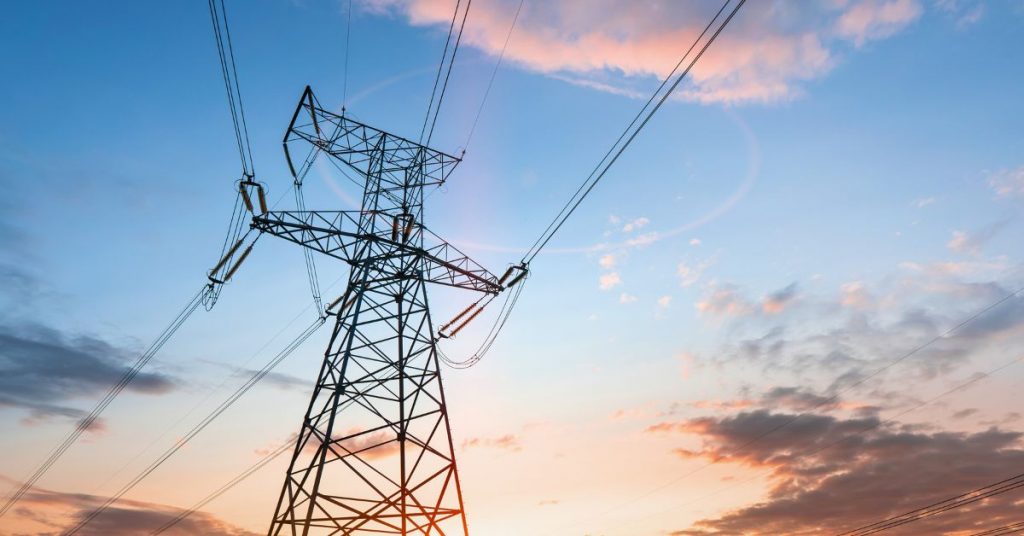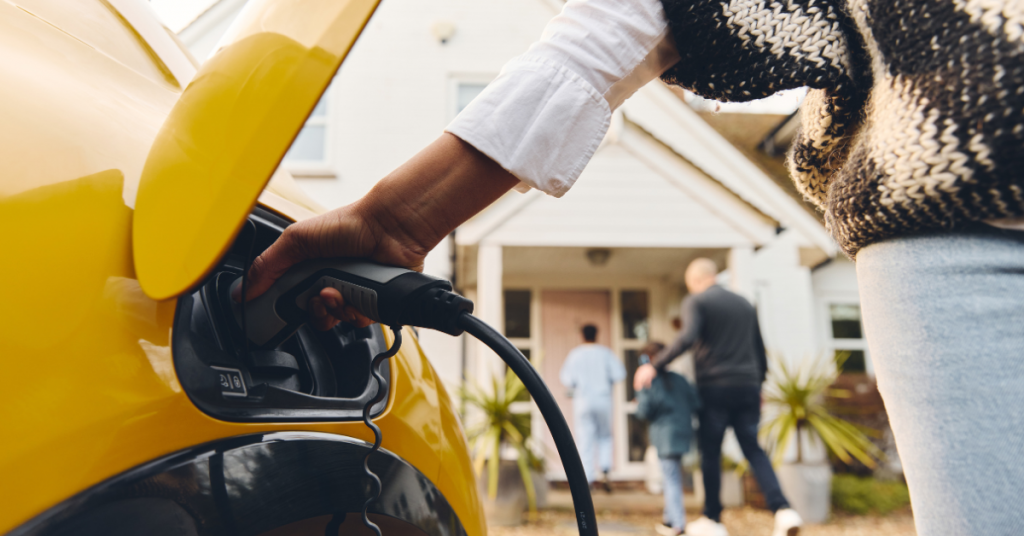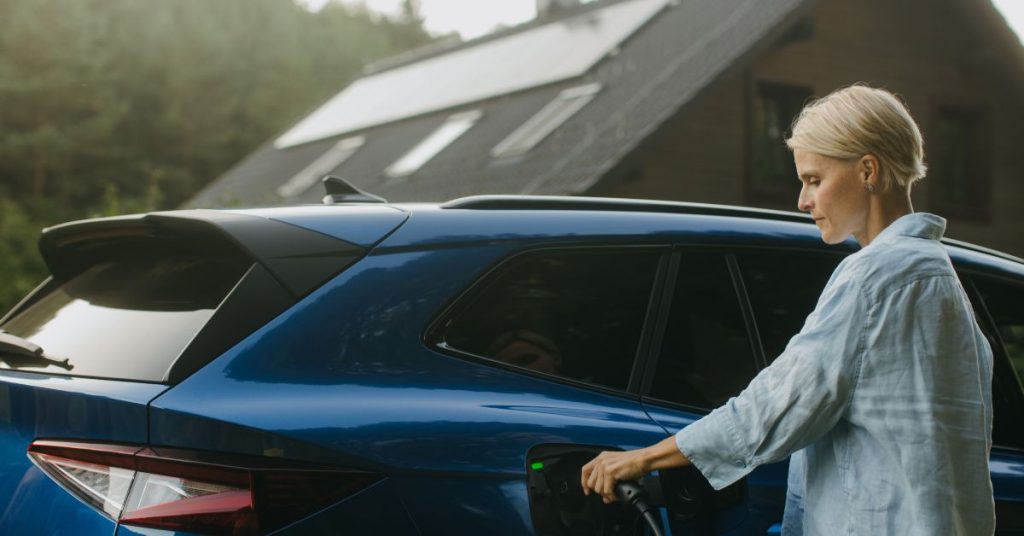
The transformative potential of Vehicle-to-Grid (V2G) technology for the UK’s energy system is undeniable – from enhancing grid stability, to maximising renewable energy use and offering financial benefits to electric vehicle (EV) owners. Widespread deployment promises a future where EVs serve as mobile energy assets, supporting a decarbonised and resilient grid. However, V2G deployment in the UK remains in its infancy. Why is this the case?
The policy landscape: what’s missing?
While the UK government has expressed support for V2G and smart charging, ambiguities remain in the regulatory framework. Defining V2G services clearly within energy market rules, ensuring fair access for V2G providers to ancillary service markets, and establishing robust consumer protection mechanisms are crucial.
Standardised technical protocols for communication and interoperability – not just between the EV and the charger, but also with grid operators and aggregators – are essential for a seamless V2G ecosystem. And at the consumer level, concerns around EV battery degradation and how V2G participation impacts warranties need to be addressed with clear guidelines and industry-wide standards.
Incentivising adoption
The initial cost of V2G-compatible chargers is currently higher than standard unidirectional units. While government funding has supported various V2G trials, the UK lacks a clear and sustained incentive structure to drive wider adoption by both domestic and commercial users. This could take a number of forms: upfront grants for V2G hardware, preferential electricity tariffs for V2G participants, tax benefits, or direct payments for providing grid services. The long-term visibility and stability of these incentives will be central to building consumer and investor confidence alike.
Ensuring grid readiness
Widespread adoption of V2G will require upgrades or added capability in electricity distribution networks. Distribution Network Operators (DNOs) have a critical role to play here, both in terms of proactive planning for bidirectional energy flows and simplifying the connection approval process for V2G installations. Investment in smart grid technologies at the local level, including enhanced monitoring and control systems, will be necessary, as will universal data sharing protocols allowing V2G stakeholders – EVs, chargers, aggregators, and DNOs – to collaborate effectively.
International best practice
Several countries are already making significant strides in V2G, offering valuable lessons that can inform and guide the UK’s strategy.
Japan
Japan is a pioneer in V2G, due to the country’s early adoption of the CHAdeMO charging standard. The Japanese government’s support for V2H (Vehicle-to-Home) and V2G is driven, at least in part, by a strategic effort to enhance energy resilience, particularly relevant to Japan in the context of recent natural disasters. Regions with high EV ownership, such as the Tokyo Metropolitan Area, Aichi, and Kanagawa, stand out as excellent candidates for V2G deployment.
The Netherlands
The government of the Netherlands has actively promoted smart charging and V2G ecosystems, encouraging public-private partnerships and creating “bidirectional cities” at the municipal government level. One example is Utrecht, where local government partnered with Renault Group, MyWheels, and We Drive Solar to launch a large‑scale car‑sharing service, using V2G technology. Their approach to developing local markets and integrating V2G into urban planning offers useful insights for city leadership worldwide.
Denmark
Denmark hosted one of the earliest successful commercial V2G projects and has demonstrated significant revenue potential for EV owners providing grid services. Their experience with projects like the Parker Project, which highlighted substantial annual revenue per car from frequency services, underscores the economic case when market structures are accommodating. However, regulatory frameworks and taxation around V2G services have also presented challenges.
USA
The State of California is actively working on a Vehicle-Grid Integration program, including exploring deployment of the technology in their school bus fleet to support community resilience, as well as developing market acceleration initiatives for V2G tariffs. Ongoing discussions around utility interconnection processes and the need for incentives for bidirectional chargers are highly relevant to the UK and other emerging V2G markets.
The Power of Collaboration: A System-wide Approach
Unlocking V2G’s potential is not the sole responsibility of any single entity; it demands a concerted, collaborative effort from all stakeholders:
- Vehicle manufacturers: Integrating V2G capability as a standard feature in new EV models, and offering transparent and supportive warranty terms that accommodate V2G usage.
- Energy providers & aggregators: Developing innovative, user-friendly, and financially attractive V2G tariffs and service offerings, and investing in platforms to manage aggregated V2G resources.
- Charge point manufacturers: Continuing to innovate and produce safe, reliable, interoperable, and increasingly affordable bidirectional charging hardware.
- Government & regulators (Ofgem, DESNZ): Enabling relevant policy and regulatory frameworks, providing targeted and sustained support where needed, and facilitating cross-industry dialogue and standardisation efforts.
- Academia & research institutions: Continued research and development are essential to address remaining technical challenges, optimise V2G algorithms, and further understand long-term battery impacts and consumer behaviour.
Humax: ready to collaborate for a V2G future
At Humax, we are committed to playing our part in building a thriving V2G ecosystem in the UK, and we appreciate that the charging technology is just one piece of the puzzle. We are open to collaborating with government bodies, energy companies, automotive partners, and other stakeholders to help overcome the existing barriers and establish the supportive framework V2G needs to succeed.
In the meantime, we’re supporting forward-looking domestic and commercial EV users by delivering V2G-ready charging infrastructure. If you’re looking to make the switch to V2G charging, speak to Humax today to learn more about our solutions. Drop us a line at sales@humaxcharging.com or fill in our contact form — we’d be happy to help you get started.



